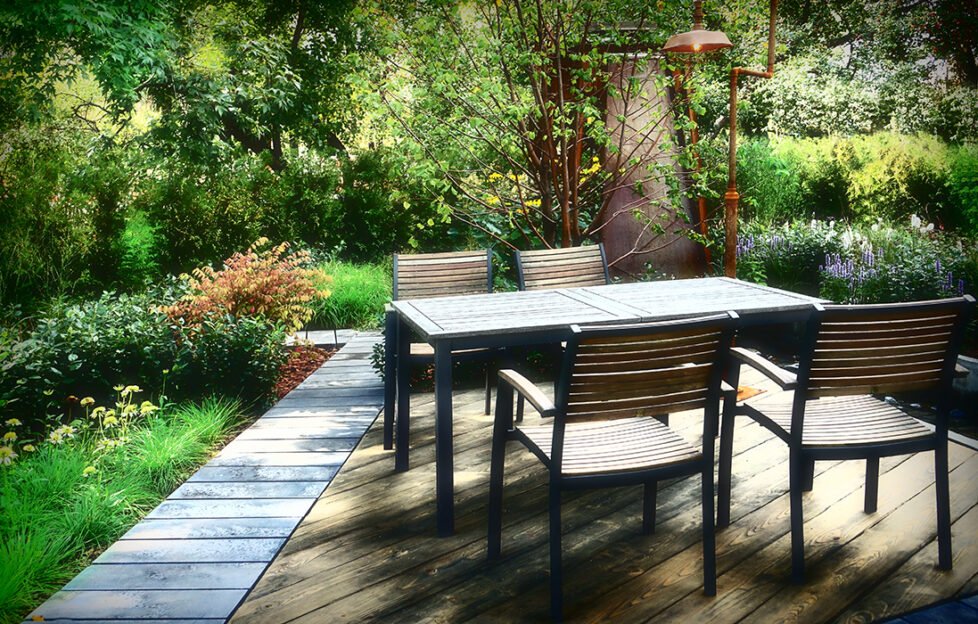2.2 million UK households are currently facing a summer hosepipe ban as the dry weather and string of heatwaves continues.
The ban comes a week after the UK’s hottest day on record when temperatures surpassed 40℃.
These unique conditions have left our gardens suffering but luckily,
Marshalls, the experts in hard landscaping, are here to share the 6 best ways to drought-proof your garden to keep them healthy and protected from future heatwaves.
What is drought-tolerant landscaping?
During periods of a prolonged lack of rainfall and water (such as during a hosepipe ban), plants become parched and eventually die. Drought-tolerant landscaping, or xeriscaping, involves
- growing plants and flowers that won’t wither without water
- incorporating landscaping ideas, such as hardscape, that will reduce water use.
6 top tips for creating a drought-tolerant garden
🌿Get a good balance of soft and hard landscaping
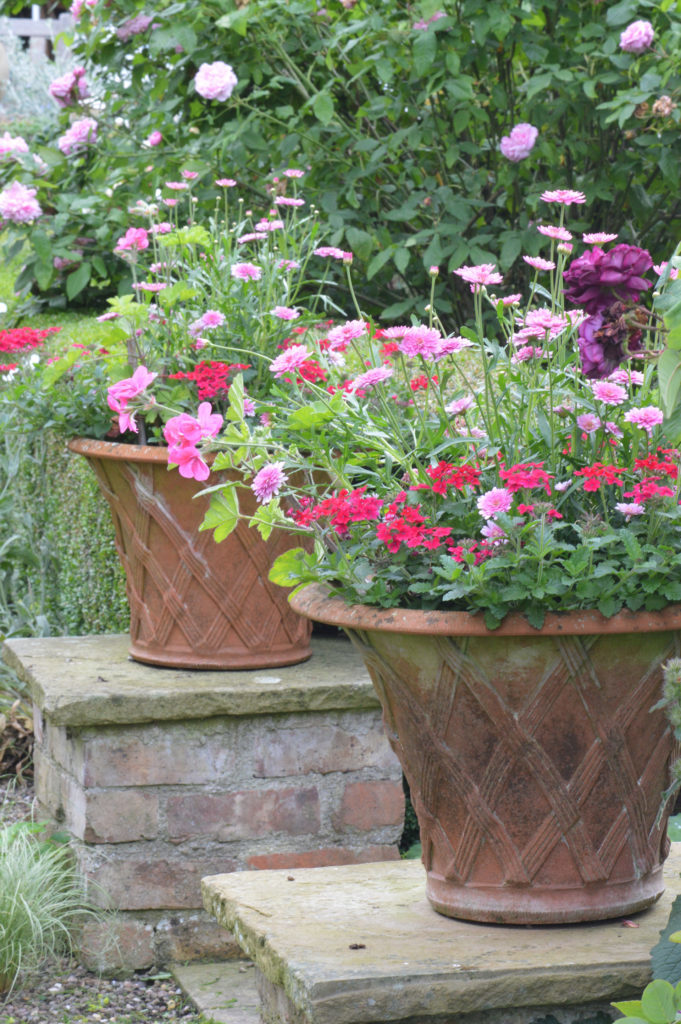
Pic: Susie White, My Weekly gardening expert, susie-white.co.uk
With grass and plants obviously being the biggest drain to your water supply, one of the first things you can do in your garden is create a design with a mix of both soft and hard landscaping. Incorporating more hardscape outdoor living spaces like patios, decks and pathways is a great way to reduce water use and make the most of your garden in the hot weather.
🌿Choose drought-tolerant plants
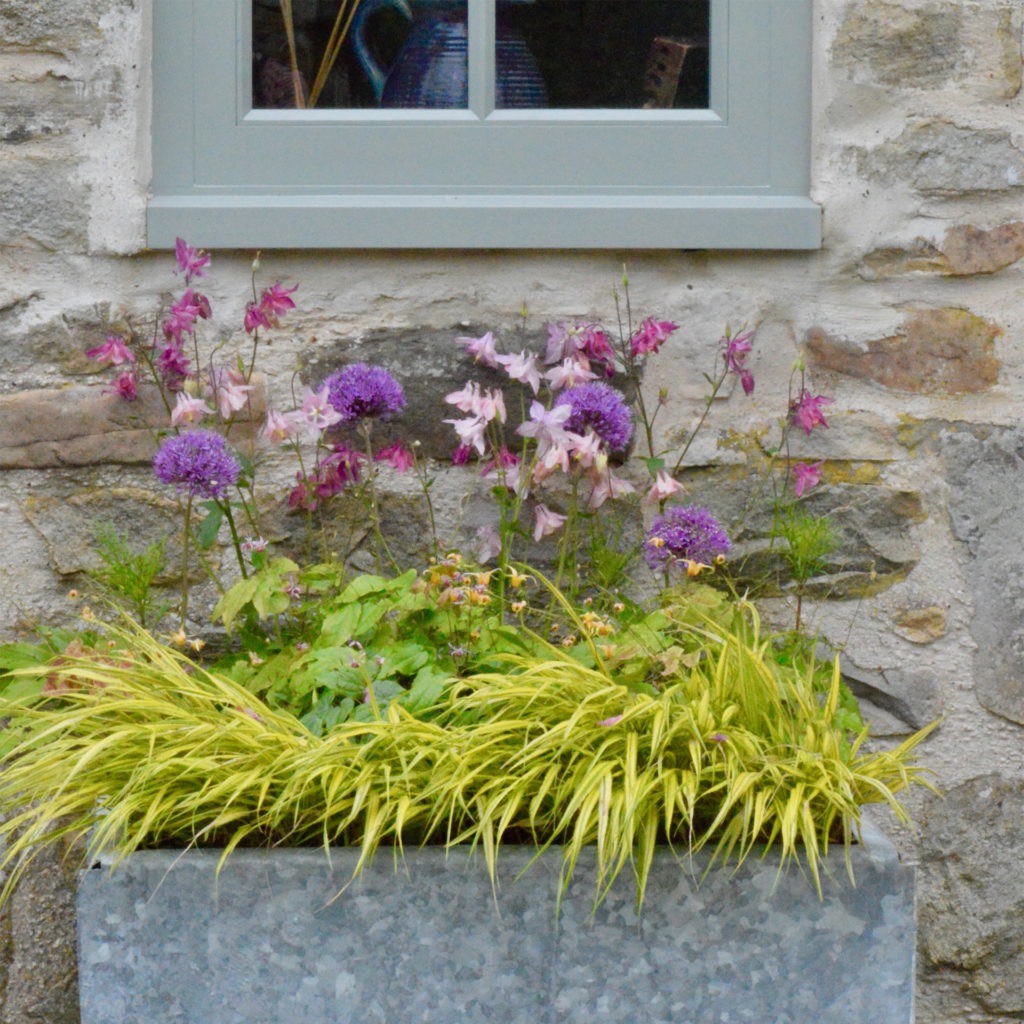
Picture: Susie White, My Weekly gardening expert, susie-white.co.uk
Drought-tolerant plants include
- succulents
- rock garden plants
- native shrubs and trees
- wildflowers
- ornamental grasses.
Identify which areas of your landscape are driest and which get more sun or shade. Then group plants together according to their specific needs – with the idea being that you only water what needs to be watered.
Keep plant selections as simply as possible, a few varieties can make a big impact while also having less cost and effort.
🌿Incorporate more native plants
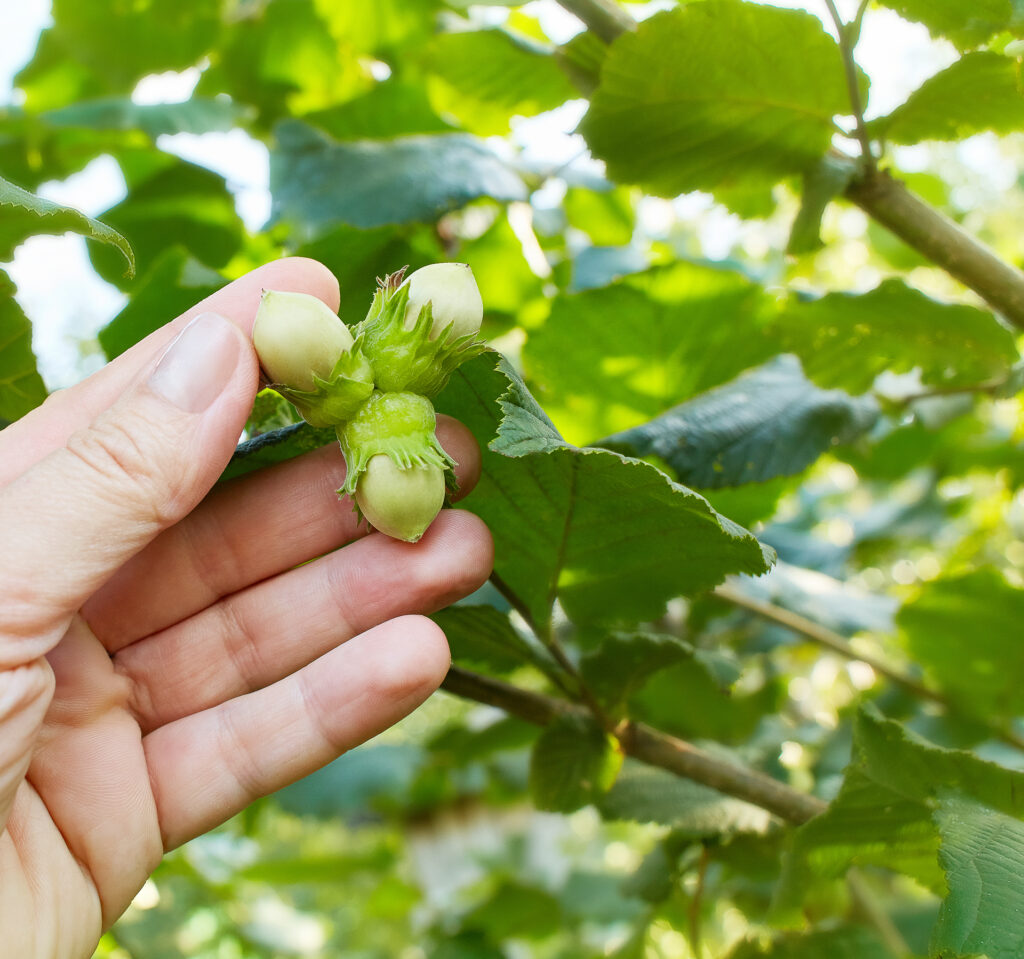
Grow your own hazelnuts! Pic: Shutterstock
Some of the most drought-tolerant plants are what are considered native plants to a particular region. These plants,
shrubs and trees have naturally adapted to your soil and climate – standing the test of time and gracing the area long before garden hoses came around. These are also usually cost-effective, especially as you most likely already have some growing on your property.
🌿Improve soil quality
Focus on a goal of soil that drains well and retains adequate moisture to sustain plant life. Drought-tolerant plants won’t survive long in soggy, poorly drained soil.
The best way to achieve this is to add 18-22cm (6-8 inches) of organic material such as compost, to the top layer of soil. However keep in mind that some drought-tolerant plants thrive in dry soil, such as succulents and lavender.
🌿Consider alternatives to traditional turf
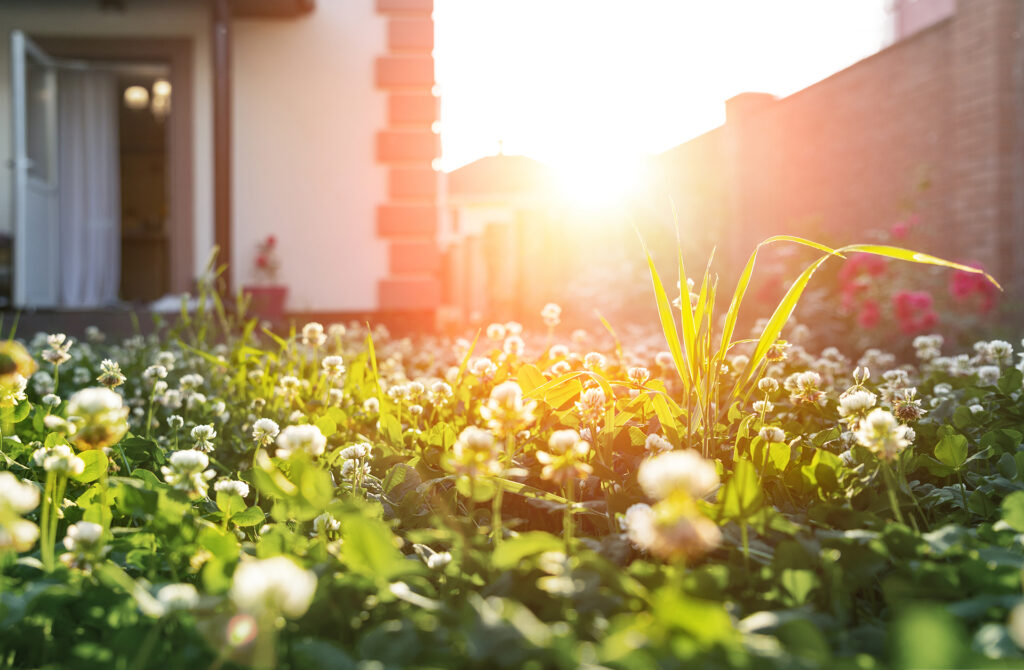
Clover stays green, and also enriches the soil. Pic: Shutterstock
There are many drought-resistant alternatives to traditional lawn grasses. Alternatives include clover, ornamental grasses and perennial ground covers. These stay green even in the driest parts of summer, are low maintenance and add a little something different to your garden.
🌿The flip side of climate change… floods
While we are currently experiencing dry weather and droughts, the other side of climate change is heavier and more frequent wet weather. So when designing a garden with hardscaping elements, it’s good sense to make these permeable and give consideration to drainage. In this way you will have a garden that can withstand any weather conditions.
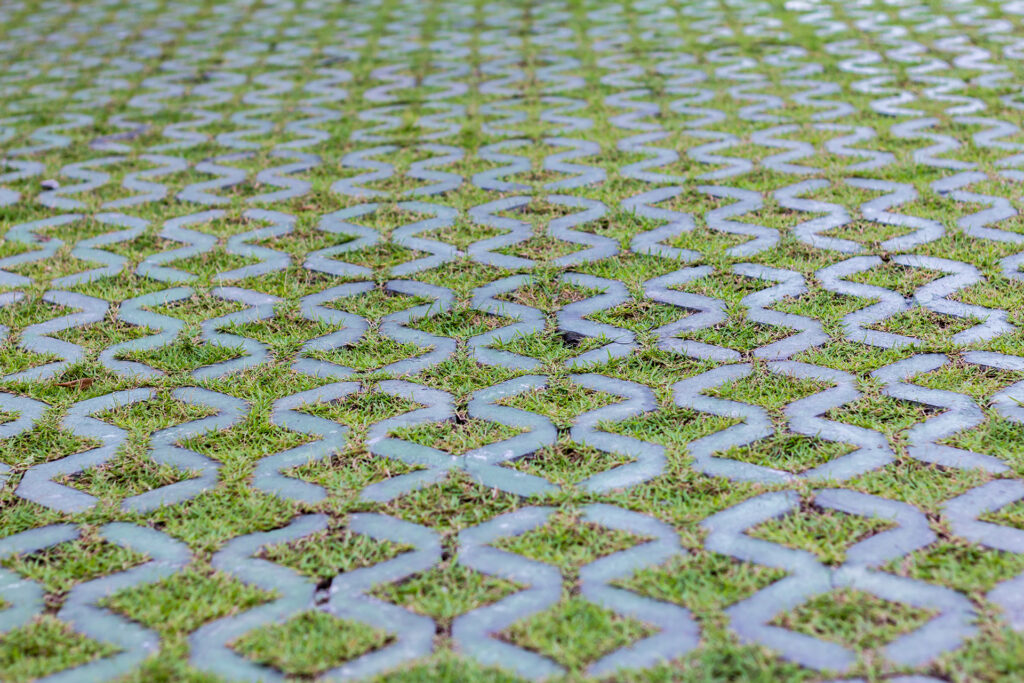
Permeable paving. Pic: Shutterstock
Permeable paving is specially designed to allow rainwater to soak through the surface, and into the ground below – therefore preventing rainwater from entering sewers without the need for any soft landscaping, drainage channels or soakaways. Rainwater will soak naturally into the ground just as it would, had the surface not been paved.
A garden that’s prepared for anything
Anna Hampshire, head of marketing at
Marshalls commented, “As not just the UK but the whole globe continues to see record temperatures and increasing dry weather, drought-tolerant landscaping has become more popular and even mandatory in some regions.
“So to keep our gardens healthy and in top condition to enjoy the sun, preparation is key. Whilst it may be too late for this heatwave, some forward planning with your garden design can help you fare better in future increasingly hot and dry summers.
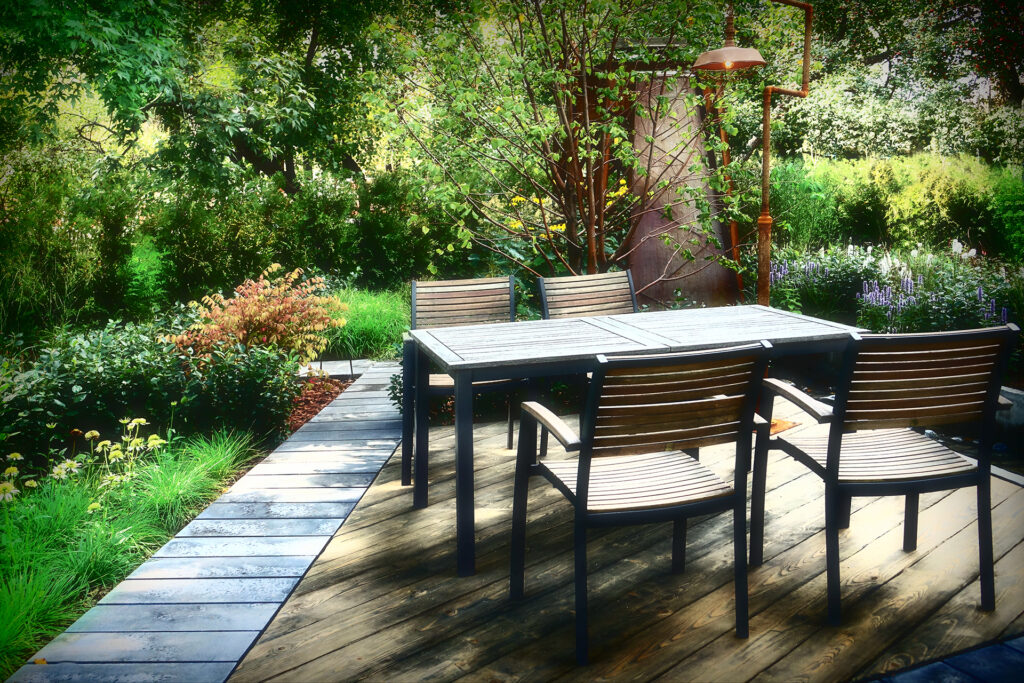
Decking reduces the area needing water, while ornamental grasses and native trees are more resistant to extreme weather. Pic: Shutterstock
“By introducing drought-resistant and tolerant plants and turfs and incorporating more hardscape elements you can create a water-wise garden that’s ready to thrive in no time.
Creating a drought-tolerant landscape can often end up being much more cost-effective than a traditional one. Plus, you will have lower maintenance needs and much less time spent watering while also protecting your much loved outdoor space from the threat of drought.”
Look out for nature-friendly gardening advice every week in My Weekly, and every month in the My Weekly Special. From supermarkets and newsagents, or why not subscribe for a great saving on the shop price!

